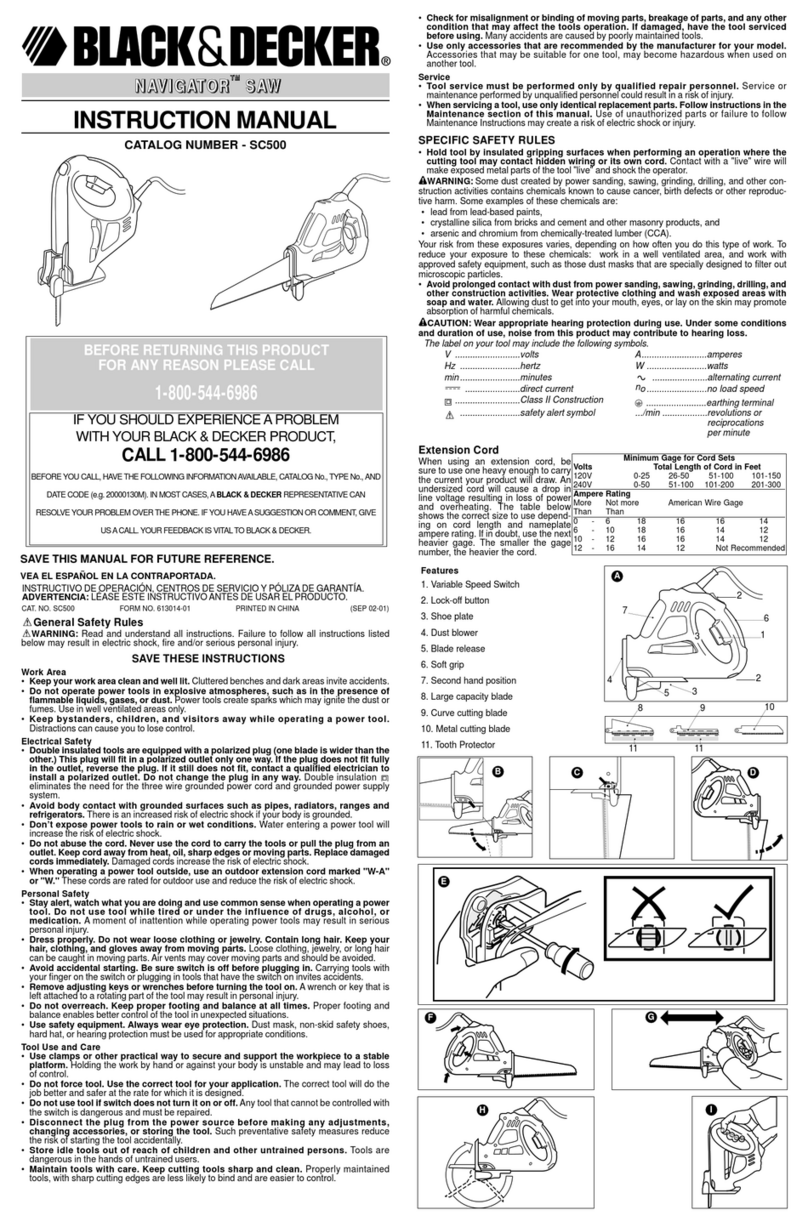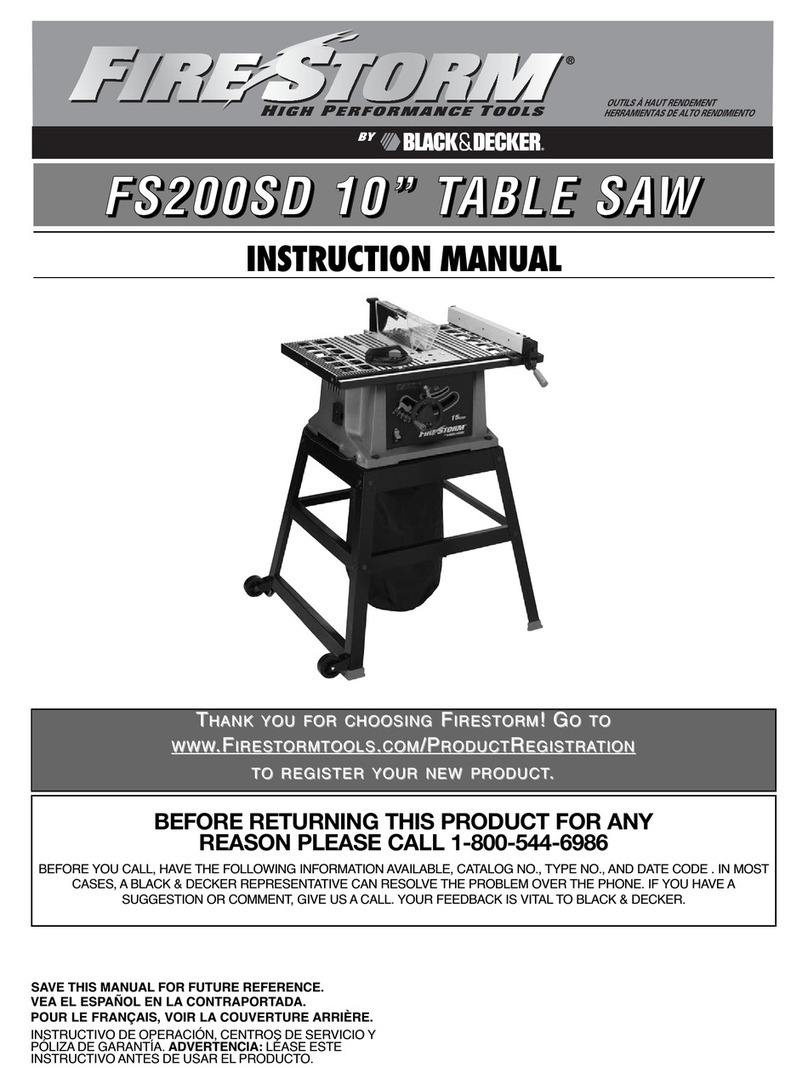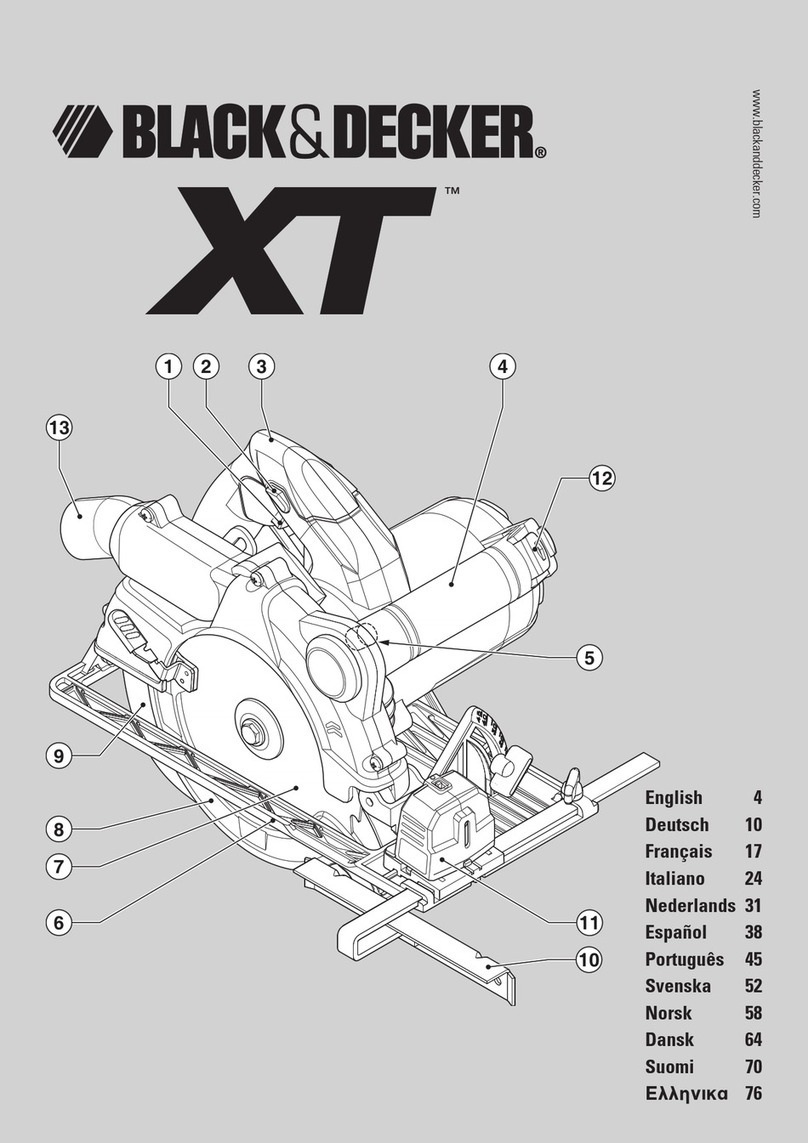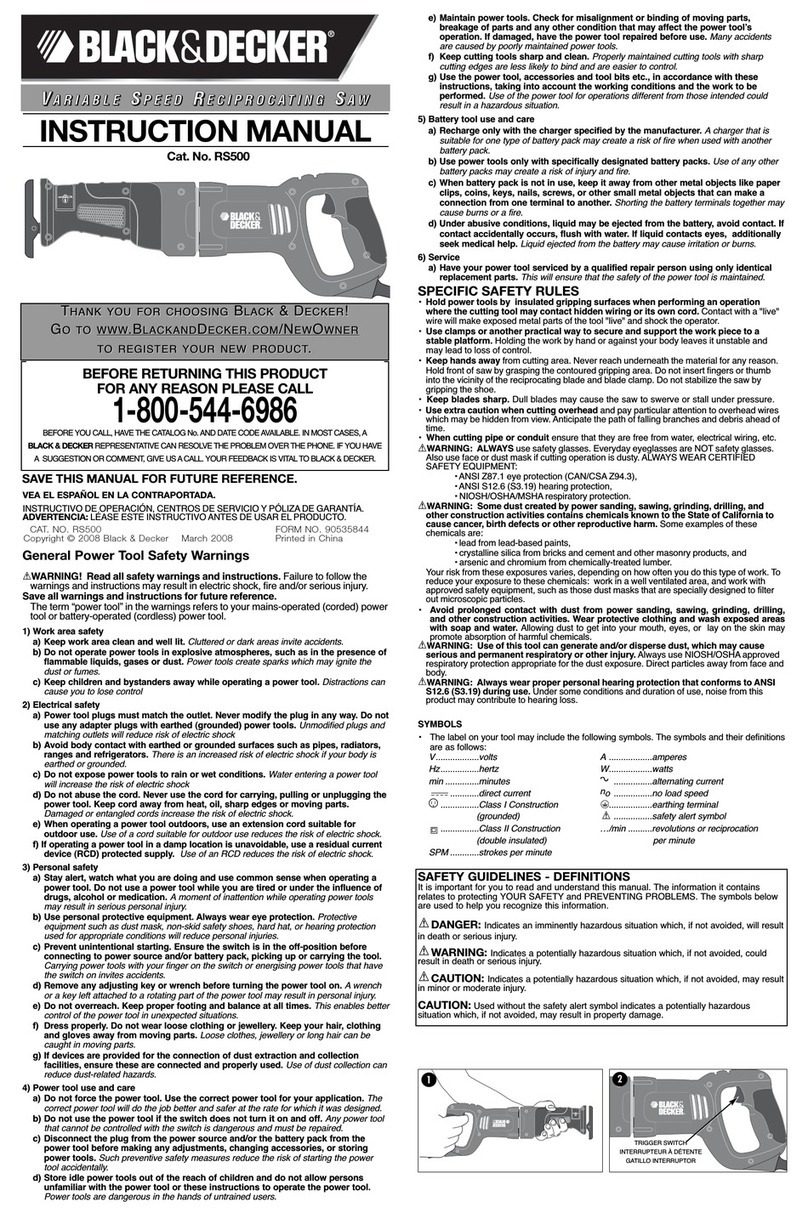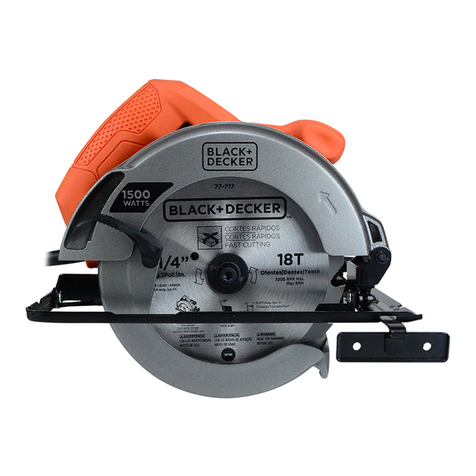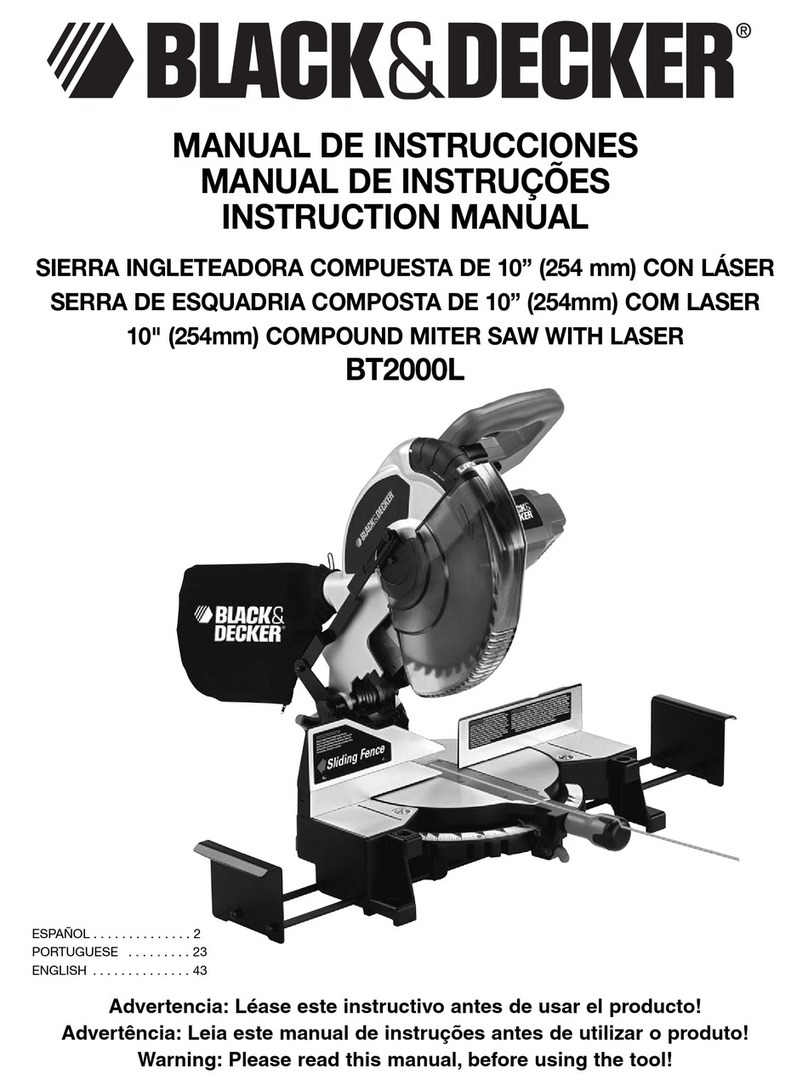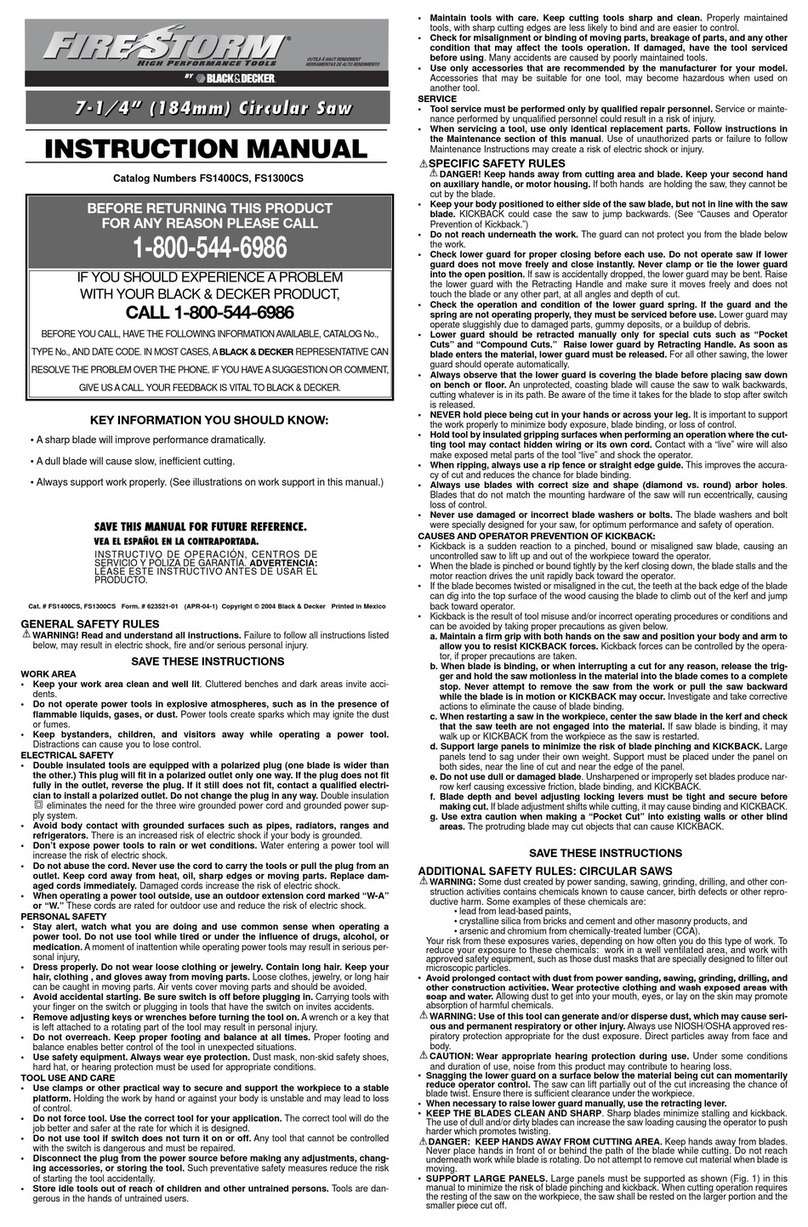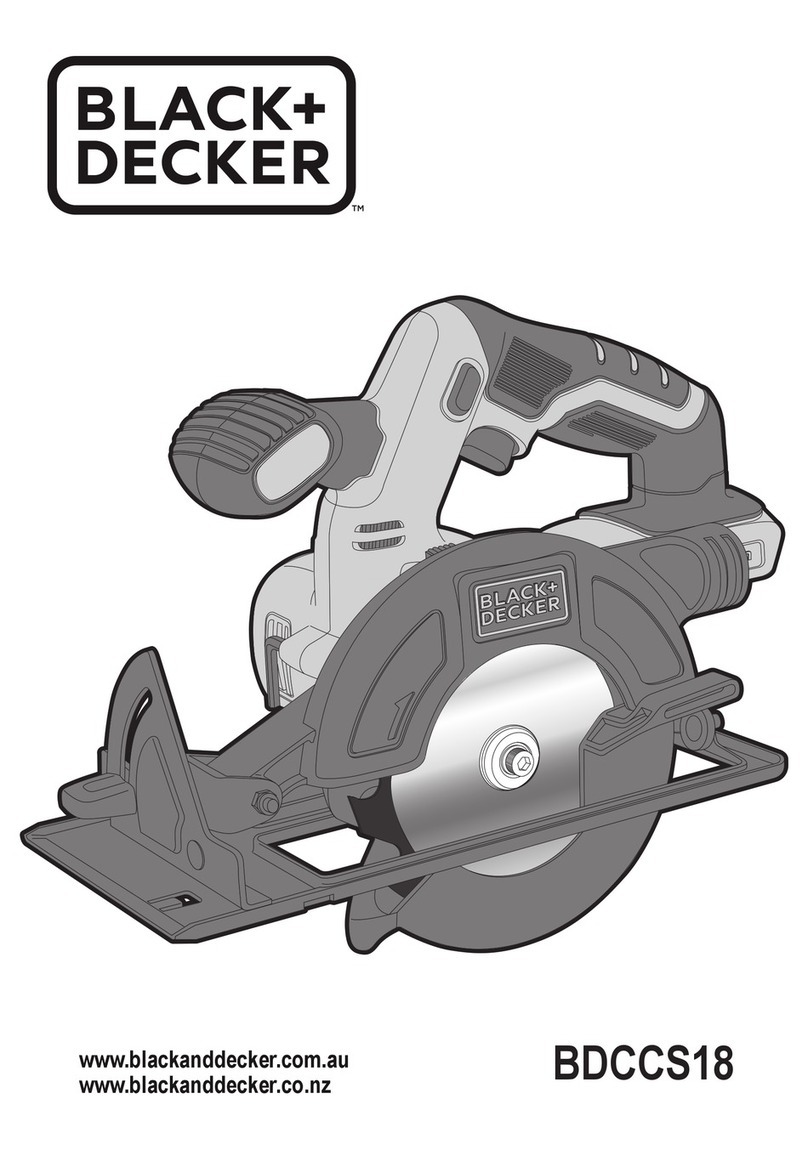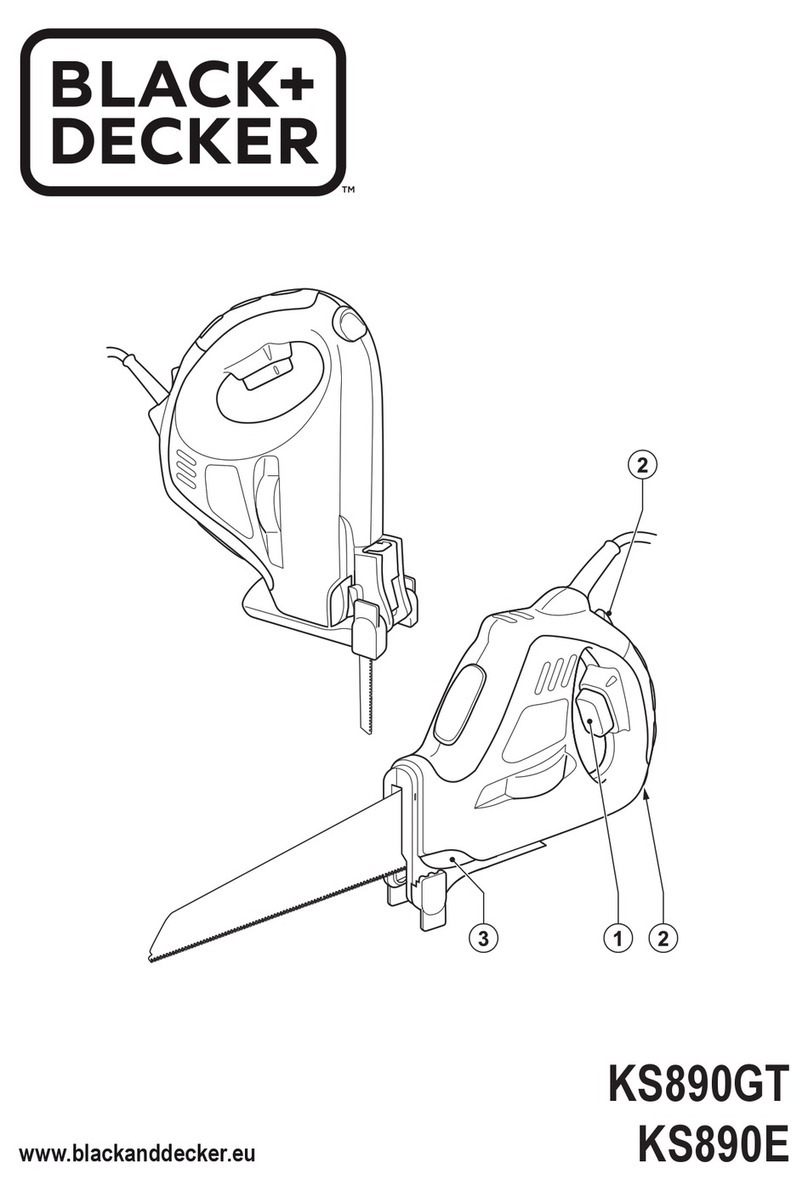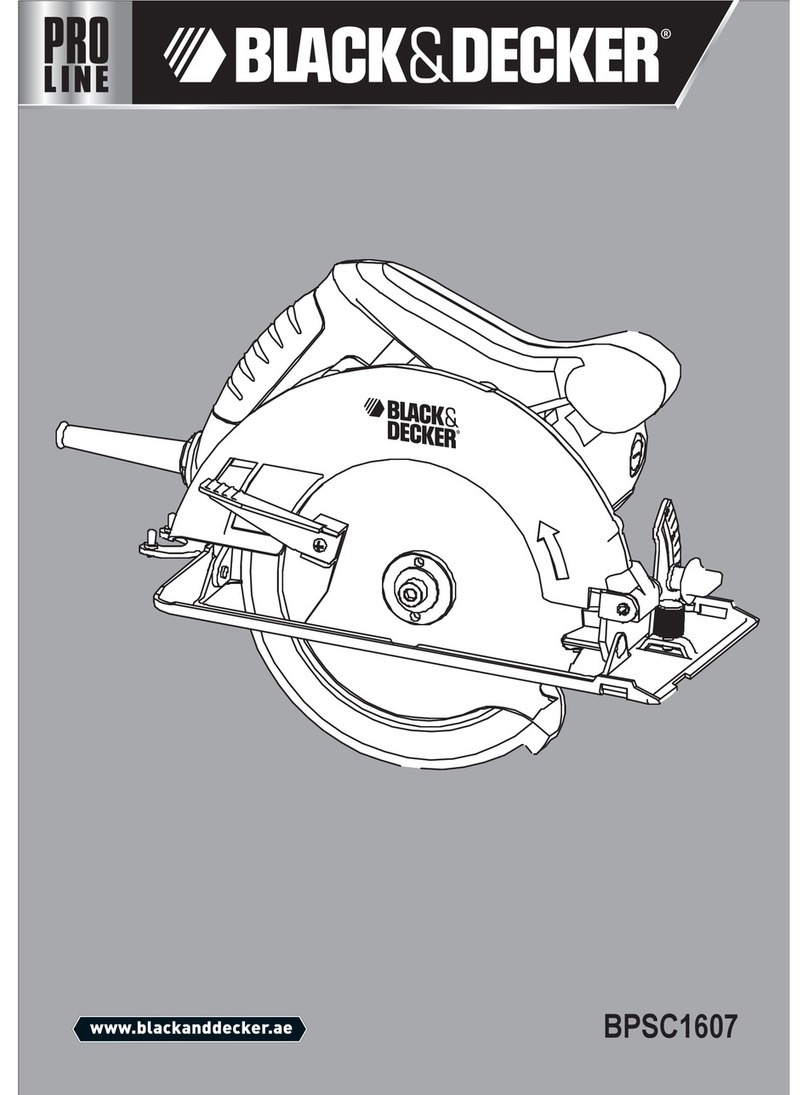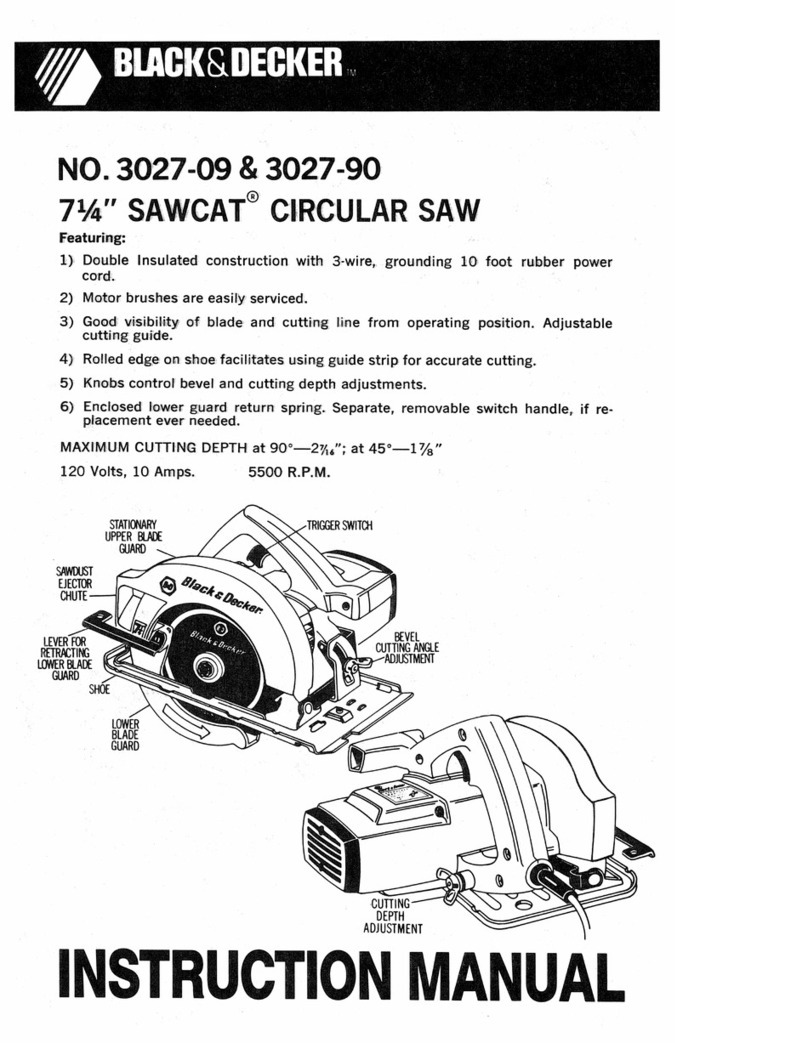•Do not operate this tool for long periods of time. Vibration caused by the operating
action of this toot may cause permanent injury to fingers, hands, and arms. Use gloves to
provide extra cushion, take frequent rest periods, and limit daily time of use.
Z_CAUTION: Wear appropriate hearing protection during use. Under some conditions
and duration of use, noise from this product may contribute to hearing loss.
z_WARNING: Some dust created by power sanding, sawing, grinding, drilling, and
other construction activities contains chemicals known to the State of California
to cause cancer, birth defects or other reproductive harm. Some examples of
these chemicals are:
• lead from lead-based paints,
• crystalline silica from bricks and cement and other masonry products, and
.arsenic and chromium from chemically-treated lumber.
Your risk from these exposures varies, depending on how often you do this type of
work. To reduce your exposure to these chemicals: work in a well ventilated area, and
work with approved safety equipment, such as those dust masks that are specially
designed to filter out microscopic particles.
• Avoid prolonged contact with dust from power sanding, sawing, grinding, drilling,
and other construction activities. Wear protective clothing and wash exposed
areas with soap and water. Allowing dust to get into your mouth, eyes, or lay on the
skin may promote absorption of harmful chemicals.
z_WARNING: Use of this tool can generate and/or disperse dust, which may cause
serious and permanent respiratory or other injury. Always use NIOSH/OSHA
approved respiratory protection appropriate for the dust exposure. Direct particles away
from face and body.
z_ WARNING: ALWAYS use safety glasses. Everyday eye glasses are NOT safety
glasses. Also use face or dust mask if cutting operation is dusty. ALWAYS
WEAR CERTIFIED SAFETY EQUIPMENT:
=ANSI Z87. 1eye protection (CAN/CSA Z94.3)
•ANSI $12.6 ($3. 19) hearing protection
•NIOSH/OSHA/MSHA respiratory protection
SYMBOLS
The label on your tool may include the following symbols.
V .......................... volts
Hz ........................ hertz
min ........................ minutes
- - - ...................... direct current
[] .......................... Class II Construction
........................ safety alert symbol
A.......................... amperes
W ........................ watts
"_ ...................... alternating
current
no ........................ no load speed
........................ earthing terminal
spm .................... strokes per
minute
• When using an extension cord, be sure to use one heavy enough to carry the current your
product will draw. An undersized cord wilt cause a drop in line voltage resulting in toss of
power and overheating. The following table shows the correct size to use depending on
cord length and nameplate ampere rating. Ifin doubt, use the next heavier gauge. The
smaller the gauge number, the heavier the cord.
Minimum Gauge for Cord Sets
Volts Total Length of Cord in Feet
120V 0-25 26-50 51-100 101-150
(0-7,6m) (7,6-15,2m) (15,2-30,4m) (30,4-45,7m)
240V 0-50 51-100 101-200 201-300
(0-15,2m) (15,2-30,4m)(30,4-60,gm) (60,9-91,4m)
Ampere Rating
More Not more American Wire Gage
Than Than
0 6 18 16 16 14
6 10 18 16 14 12
10 12 16 16 14 12
12 16 14 12 Not Recommended


